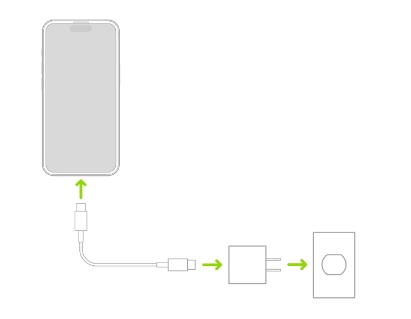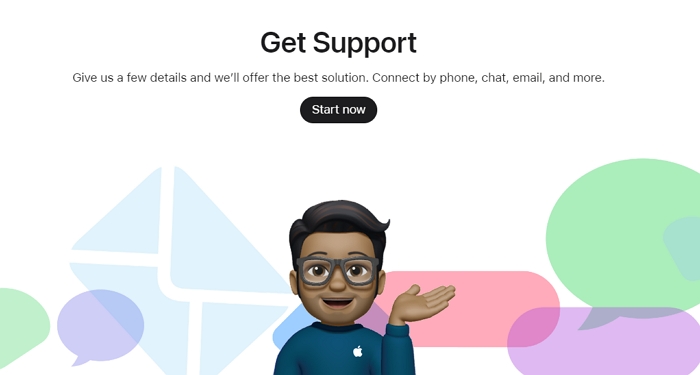Hot Topics
 by Maggie Mueller
Updated On Dec 30, 2024
Published On Dec 30, 2024
Basic iPhone Tips Ideal for Newbies
by Maggie Mueller
Updated On Dec 30, 2024
Published On Dec 30, 2024
Basic iPhone Tips Ideal for Newbies
A frozen iPhone can be frustrating, leaving you unable to perform even the simplest tasks. Whether your device is stuck on an unresponsive screen or completely frozen, this guide will help you troubleshoot and reset your frozen iPhone effectively.
Let's start with the possible reasons why your iPhone may be frozen:
Understanding the cause of a frozen iPhone can help prevent future occurrences. Here are the most common reasons:
Based on the above reasons, the following are the most effective solutions to reset your frozen iPhone:
Sometimes, closing background apps can resolve temporary glitches causing the freeze. Here's how:
Step 1: Open the App Switcher:
Step 2: Swipe up on each app card to close all running apps.
Once all apps are closed, check if your device responds normally.
If your iPhone remains unresponsive or you are unable to close background apps, a force restart might resolve the issue. Follow these steps based on your iPhone model:
iPhone 8 and Later: Quickly press and release the Volume Up button, then the Volume Down button. Press and hold the Side button until the Apple logo appears.

iPhone 7 and 7 Plus: Press and hold the Volume Down and Sleep/Wake buttons simultaneously until the Apple logo appears.

iPhone 6s and Earlier: Press and hold the Home and Sleep/Wake buttons simultaneously until the Apple logo appears.

A low or critically drained battery may cause your iPhone to freeze. To address this:
Step 1: Connect your iPhone to a charger using a certified cable and adapter.
Step 2: Allow it to charge for at least 15-30 minutes.
Step 3: Once the battery has sufficient charge, try restarting your device.

Running out of storage space can also lead to all sorts of problems with the iPhone, even a frozen one. Follow these steps to check the available storage on your iPhone:
Step 1: Open the Settings app.
Step 2: Go to General > iPhone Storage.
Step 3: If you find that your device doesn't have adequate storage space, you can use the following steps to free up some storage space:
After clearing storage, restart your device to ensure smooth performance.

Outdated iOS versions can cause bugs and performance issues which can in turn lead to problems with the proper function of the device. Updating to the latest version may resolve freezing:
Step 1: Open the Settings app.
Step 2: Navigate to General > Software Update.
Step 3: Tap "Download and Install" if an update is available.
Always ensure your device is connected to Wi-Fi and has sufficient battery charge during the update.

When quick fixes don't work, using a repair tool like TinyFix can help. This software fixes iPhone and iPad system issues, including frozen screens, without data loss. It is also one of the best solutions out there as it is specifically designed to find and resolve the underlying software issues that may be causing your iPhone to freeze.
Despite its high efficiency, TinyFix is a very simple solution, with an easy-to-use interface that allows any user to repair their iPhone in a matter of minutes. Before we show you how it works, let's first outline its main features. They include the following:
Use these simple steps to fix a frozen iPhone using TinyFix:
Step 1: Download and install the program on your computer. Open it and then use a USB cable to connect the iPhone to the computer.
Step 2: Open TinyFix and select "iOS System Repair" in the main window. Choose the "Standard Repair" mode and click "Standard Repair" to continue.

Step 3: You will be prompted to download the firmware package needed to fix the device.

Step 4: When the download is complete, click "Start" and TinyFix will begin fixing the device.

Keep your iPhone connected until the program notifies you that the problem has been resolved. Your device will restart.
If none of the above solutions work, it may indicate a hardware issue. Contact Apple Support for professional assistance:
Apple's technicians can diagnose and repair hardware problems, ensuring your device functions properly.

A frozen iPhone can disrupt your daily routine, but with the right steps, it's often fixable. Start by closing apps, force restarting, checking for low battery and storage issues, or updating the iOS. If the problem persists using a repair tool like TinyFix can be a great solution as it will fix any system issues without causing data loss. But if you suspect a hardware issue, contact Apple Support for help.
